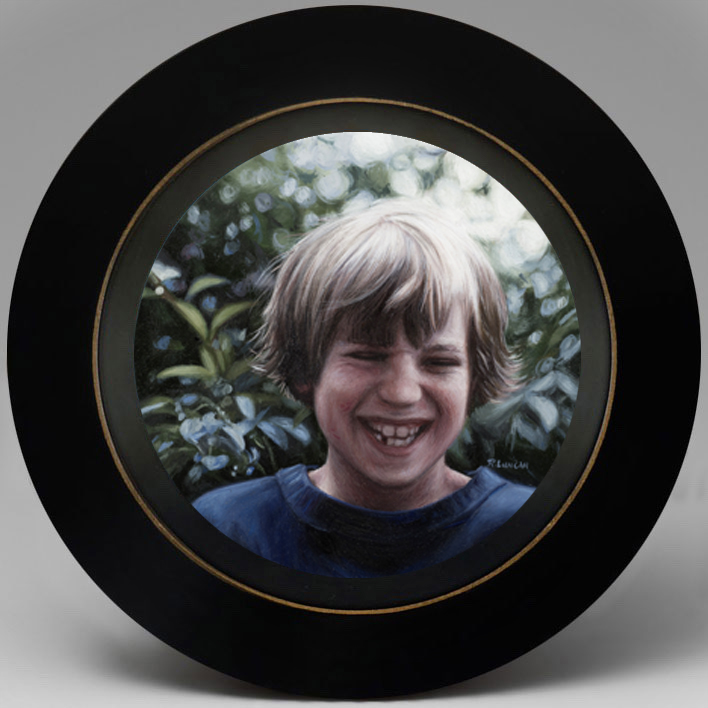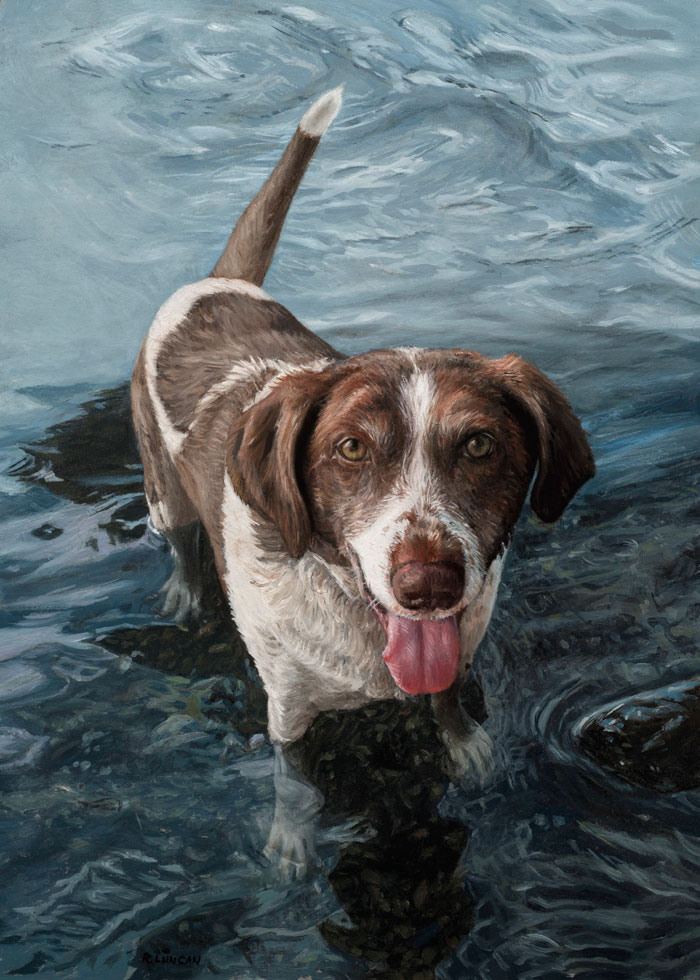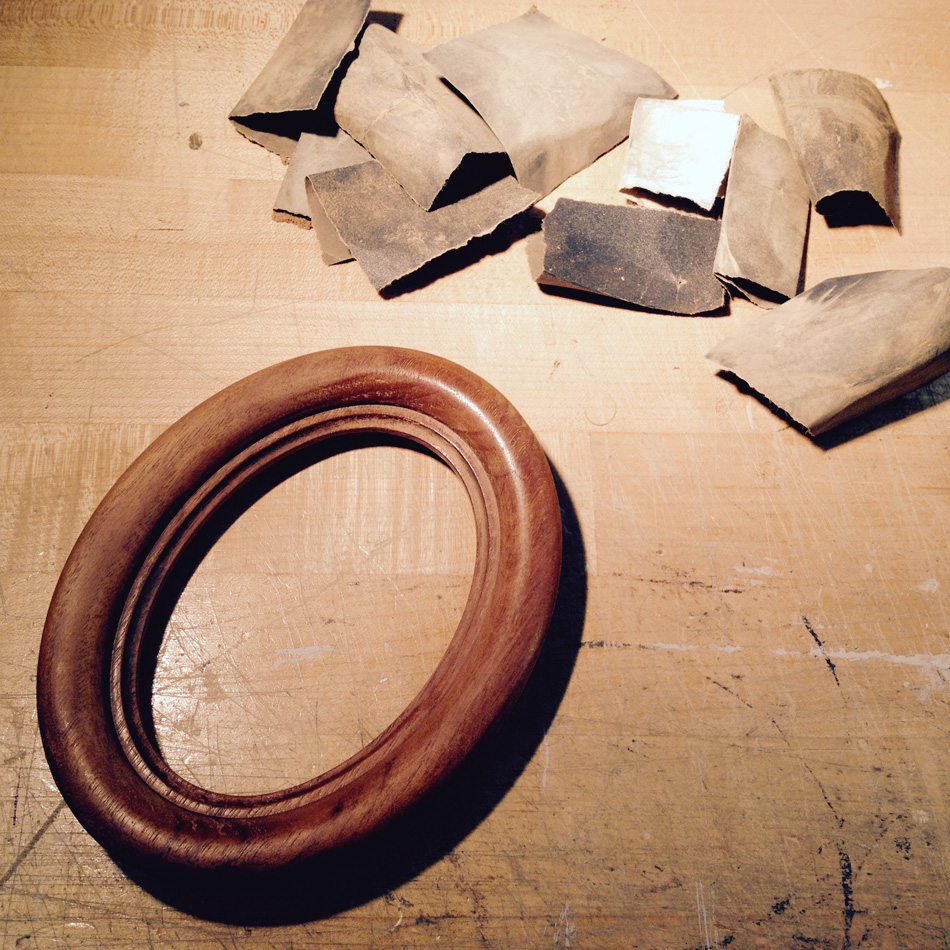Portrait of Sean
Sean, the happy kid featured in this month’s monthly miniature, is the son of artist Barbara Robertson. I was first introduced to Barbara in the basement at the Seattle Art Museum many years ago and have been following her brilliant career every since.
There is a fear for many women that their career will not recover after being put on hold to raise kids. That is no less true for artist moms, who deal with the additional challenges in being a woman artist who have historicaly been less recognized in museums, galleries and art history publications. Every step forward in a victory, and Barbara is another inspiring example that it can be done. Among other things, the story she tells below highlights how powerful it is to have a role model. Thank you Barbara, for being another incredible inspiration!
Paintings in this Monthly Miniature series fall somewhere between commission work and my original works. Like a commission, source images for these miniatures may come from family photos or be taken by me. But whereas I involve clients in my commissions, both in selecting photos and composing the painting, I take full control in the Monthly Miniatures. Most parents see these portraits for the first time when you do, here in the newsletter. I love the process of composing a painting in collaboration, but having complete freedom gives me a different connection to the painting, and it is helping me develop confidence in my choices.

Barbara (far right) pictured with her family. Her son Sean (left middle row with green hat), husband, step children, grandchildren and nieces and nephews.
Words from Barbara, on being an artist and mother:
When my son was born, I really didn’t know what it was like to be an artist, or anything else, except being a young girl. I had wanted, and dreamed, of being an artist since I was fourteen when I met my first professional, working artist. I was full of the enthusiasm and optimism of youth.
She was the mother of my best friend. I had not dreamed of being a mother. But when I had my baby at age 19, at least I had a great role model for how to be an artist and a mother. My friend’s mother had a studio in her home, with a door that she kept closed; her own private space. I was often invited in to see her work and receive her advice when I was in high school.
My baby was a surprise, of course…who plans a baby at 19? I was a freshman in college, so had taken a few introductory courses and loved it. I was determined to get my degree in art and determined to get my MFA, which I did. It took me ten years, going part time, to get my BFA. I was so naïve, that I did not know that no one takes you seriously as an artist if you are a woman and certainly not if you are a mother. If someone had told me that, I would not have believed them. I had my friend’s mother as an example and I just proceeded as if I had no impediments.
By the time I was in graduate school, my son was ten, and being a parent and a beginning artist was much easier but still a challenge. I was always juggling commitments to find time to make some art. My son often came to UW with me in the evenings and rode his skateboard down the halls of the art school building befriending and charming some of the other students.
Being a young parent definitely has its advantages; you can carry your child around for a long time without getting tired, have endless energy and certainly no carpel tunnel stress that most mature mothers experience. You have lots of stamina and optimism but, the downside is that you are not very smart. And you don’t know what you don’t know. I’m pretty sure that was a disadvantage for him. So my son and I grew up together. He went everywhere with me and lived around creative people and “alternative” life styles and was always a welcome part of the group. This has, I think, contributed to him being a tolerant, wise, independent and intelligent person. As he got older, I devoted more of my time to my art and I think that he thinks that having an artist mother is a natural thing. He is a self -employed craftsman and an amateur chef.
Barbara Robertson
Seattle based artist Barbara Robertson is known primarily for her work in experimental printmaking. Recently, she has expanded her practice to include digital animation and sound installations. Awards for her work include grants from the Seattle Office of Arts and Culture City Artists program, 4Culture Individual Artists award, 4Cullture Artists Projects grants, Artists Trust GAP grant, a KALA Art Institute Fellowship and the Neddy Fellowship from the Behnke Foundation.
In 2004 her work was included in “Events,” a collaboration with the Merce Cunningham Dance Company, Joyce Theater, New York. In 2012, her work in animation was exhibited at the 4Cutlure Electronic Gallery in Seattle, in 2012 at “aproject space” in Seattle, Washington, at Trykk 17 Art Center, in Stavanger, Norway and at the Eleftherias Art Center in Athens, Greece. In the winter of 2013, her animation “Three Phases,” was exhibited on a large outdoor screen at the Gates Foundation in Seattle. In 2014, three animations and one work on paper were part of a large special exhibition at the Tacoma Art Museum, titled “Ink This! Contemporary Print Art in the Northwest.” Robertson’s work shown in 2014-2016 as part of “The Intersection Between Science, Art and Technology” exhibition at the American Embassy in Bern, Switzerland. In 2015, her work in animation and print was exhibited at “Impact”, Hangzhou, China. Three animations were shown in 2016 at 4Cullture’s E4C electronic gallery.
Robertson’s work is included in private and public collections including the State of Washington Percent for Art, King County Public Art Collection, the City of Seattle Portable Works Collection, Harborview Medical Center, Tacoma Art Museum, University of Washington Special Collections, US Trust and Safeco Corporation. She has a Master of Fine Arts degree from the University of Washington, Seattle. She established the print art program at Pratt Fine Arts Center in Seattle, served on Pratt’s board of directors and is the founder and past president of Seattle Print Arts. In 2016 she curated and organized a satellite exhibition in conjunction with the Seattle Art Fair, “In Context” exhibiting large scale work by thirteen regional artists. In 2017, her large scale, sight specific animation installation, “Architectonic” was exhibited at Oxbow Art Space in Seattle.















